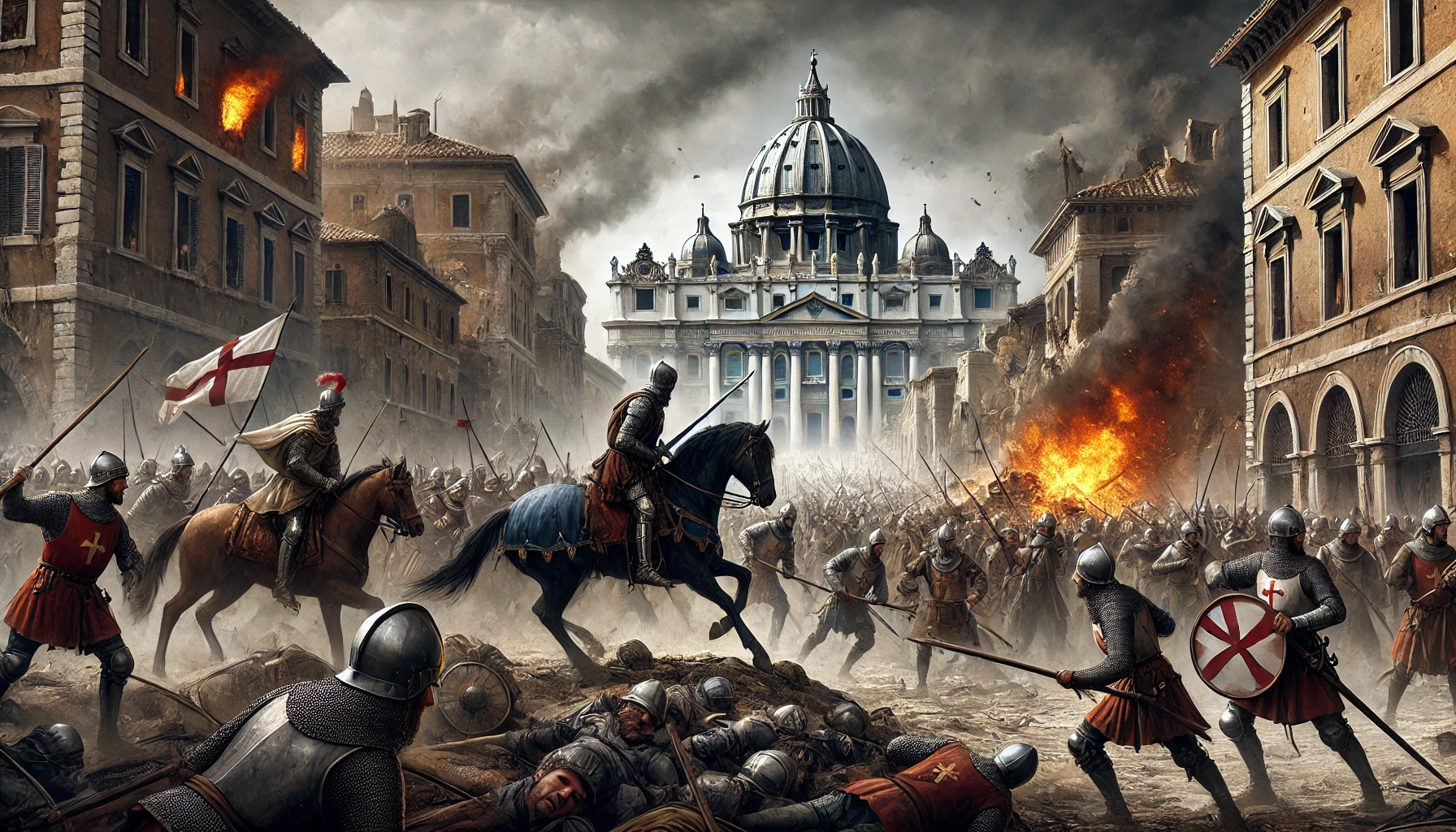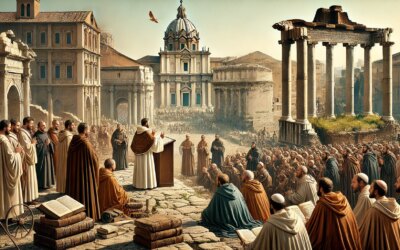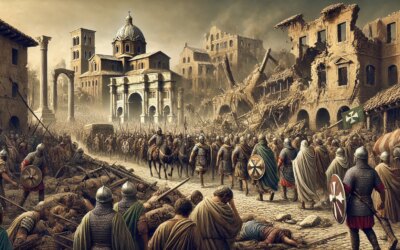Rome in the Midst of a Power Struggle
By the late 11th century, Rome was a battleground for competing factions. The Investiture Controversy had plunged the papacy into conflict with the Holy Roman Empire, with Pope Gregory VII and Emperor Henry IV fighting over control of the Church. In 1084, this struggle reached a dramatic climax when Norman forces under Robert Guiscard stormed the Eternal City.
The Siege and Capture of Rome
In early 1084, Henry IV, having deposed Gregory VII, installed the antipope Clement III in Rome. The legitimate pope was besieged in Castel Sant’Angelo, desperately seeking allies. His salvation came in the form of Robert Guiscard, the Norman ruler of southern Italy, who led a force of 36,000 men to break the imperial hold on the city.
Destruction in the Name of Rescue
On May 24, 1084, the Normans entered Rome, forcing Henry IV’s forces to retreat. However, what followed was a brutal sacking. The Normans, unchecked by papal authority, looted homes, burned entire districts, and slaughtered civilians. The devastation was so severe that many Romans came to resent the pope they had once supported.
The Aftermath and Consequences
With Rome in ruins, Gregory VII, now deeply unpopular, fled with Guiscard to Salerno, where he died in exile the following year. The Norman sack permanently altered the city’s political landscape, weakening papal authority within Rome even as the papacy grew stronger on the European stage.
A Turning Point in Medieval Rome
The events of 1084 highlighted the fragility of Rome in the medieval era. The city, once the center of an empire, had become a pawn in greater European conflicts. Though the papacy survived, the scars of the Norman invasion remained, a reminder of how easily Rome could be plunged into chaos.






